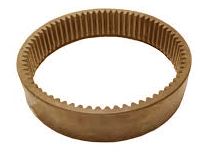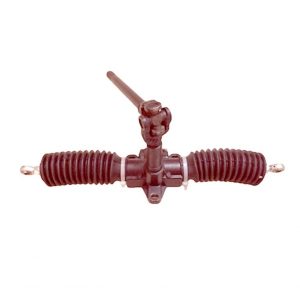Product Description
DONREX Group, since 2001.
Driven by design, focused on service, committed to quality
PRODUCT INTERVIEW:
OUR PRODUCT PACKAGE:
The below package are for your reference:
1. Little bag, good carton and strong pallet
2.Little inner box , then carton and strong wooden pallet
3. Gunny bag as your requests, then the strong pallet
4. Gunny bag, then wooden box.
5. We can custom the package according to your requests, and we can print your LOGO on your package.
OUR SERVICE:
| 1. 20 years of manufacturing success in China and exporting experience worldwide |
| 2.Global specialized producer of rigging hardware |
| 3. We combine our own resources with some other well-developed factories to fulfill a wide range of contract manufacturing capabilities. Working with one source, saves time and money. |
| 4. Satisfied supplier of 7 big companies from North America and Europe. |
| 5. Focus on efficiency offer a cost effective solution to your metal component purchasing requirements. |
| 6. Normal lead times range from 1 to 6 weeks |
| 7. Strong capacity to help customers develop new projects. |
| 8. Our sales department is 24 hours available in order to help our customers solve problems quickly. |
FAQ:
1. Can we get the samples?
Yes, we can supply you the samples for checking our quality within 10-30 days.
2. Can we place a trial order first time?
Yes, we are glad to supply you small trial order, and hope your quantity will be big in future.
3. Can you help us to do the customs clearance of import?
Yes, we can help you to do the customs clearance.
4. What is your lead-time?
With our design, fabrication and manufacturing skills and experience, we can efficiently exceed your expectations and meet the time frame required. However, we guarantee that quality and service are never compromised.
| Type: | Wire Rope Sling |
|---|---|
| Material: | Zinc Alloy |
| Lifting Capacity: | <1T |
| Fixed Form: | Bolt Type |
| Lifting Eye Type: | Flat Eye |
| Rope Core Type: | Steel Core |
| Samples: |
US$ 0/Piece
1 Piece(Min.Order) | |
|---|
| Customization: |
Available
| Customized Request |
|---|
What are the applications of pulleys in the automotive industry?
Pulleys have various applications in the automotive industry, contributing to the operation of different systems within vehicles. Here are some common applications of pulleys in the automotive industry:
1. Engine Systems: Pulleys are extensively used in the engine systems of vehicles. The crankshaft pulley, also known as the harmonic balancer, is connected to the engine crankshaft and drives various engine accessories through the use of belts. These accessories may include the alternator, power steering pump, water pump, air conditioning compressor, and more. The rotation of the crankshaft pulley powers these accessories, allowing them to perform their respective functions.
2. Serpentine Belt Systems: Modern vehicles often use a serpentine belt system, which is a single, long belt that drives multiple engine accessories simultaneously. The serpentine belt travels around various pulleys, including the crankshaft pulley, tensioner pulley, idler pulleys, and accessory pulleys. These pulleys guide and maintain the tension of the serpentine belt, ensuring efficient power transfer to the engine accessories.
3. Timing Belt/Chain Systems: Timing belts or chains are used in internal combustion engines to synchronize the opening and closing of engine valves with the movement of the pistons. Pulleys known as timing belt pulleys or timing sprockets are mounted on the camshafts and crankshafts, and they work together with the timing belt or chain to ensure precise valve timing. These pulleys play a crucial role in maintaining engine performance and preventing valve interference.
4. Supercharger/Blower Systems: Pulleys are integral components in supercharger or blower systems used in performance vehicles. These systems compress the incoming air to increase engine power and performance. The pulley on the supercharger or blower is driven by the engine crankshaft pulley through a belt or a drive system. By changing the size of the pulley, the speed and boost level of the supercharger or blower can be adjusted.
5. Tensioners and Idler Pulleys: Tensioners and idler pulleys are crucial in maintaining proper belt tension and alignment in automotive systems. Tensioner pulleys are designed to apply tension to belts, ensuring they remain properly seated on the pulleys throughout their operation. Idler pulleys guide the belt and help maintain its alignment. These pulleys contribute to the smooth and reliable operation of various belt-driven systems, reducing slippage and preventing premature belt wear.
6. Accessories and Auxiliary Systems: Pulleys are also employed in various auxiliary systems and accessories in vehicles. These may include systems such as power windows, windshield wipers, cooling fans, and more. Pulleys in these systems facilitate the transfer of rotational motion from motors to mechanical components, enabling the desired functionality.
Overall, pulleys play significant roles in the automotive industry by driving engine accessories, maintaining belt tension, synchronizing engine timing, enhancing performance, and supporting various auxiliary systems. Their proper functioning is crucial for the reliable and efficient operation of automotive systems and components.
How are pulleys used in manufacturing processes and assembly lines?
Pulleys play a crucial role in manufacturing processes and assembly lines, facilitating the movement of materials, components, and products. They are utilized in various ways to enhance efficiency, increase productivity, and streamline production. Here’s how pulleys are commonly used in manufacturing processes and assembly lines:
1. Conveyor Systems:
Pulleys are extensively employed in conveyor systems, which are integral to manufacturing and assembly lines. Conveyor belts or chains run over pulleys at different points along the line, transporting materials or products from one workstation to another. The pulleys help guide and support the conveyor belts or chains, ensuring smooth and controlled movement. By utilizing pulleys of different sizes or configurations, conveyor systems can be designed to accommodate various layouts, inclines, or speed requirements.
2. Material Handling:
Pulleys are used to facilitate the lifting, lowering, and movement of materials in manufacturing processes. Cranes, hoists, and lifting equipment often incorporate pulley systems to provide mechanical advantage and precise control over heavy loads. The pulleys, along with ropes, cables, or chains, allow operators to lift and position materials with minimal effort and improved safety.
3. Assembly Line Automation:
In automated manufacturing and assembly lines, pulleys are utilized in robotic systems to control the movement of robotic arms. The pulleys are incorporated into the mechanism that guides the cables or belts connected to the robotic arms. By adjusting the position and tension of the pulleys, precise and coordinated movements can be achieved, enabling efficient assembly processes.
4. Tensioning and Alignment:
Pulleys are crucial for maintaining proper tension and alignment in manufacturing processes. Tensioning pulleys are used to apply the appropriate tension to belts or chains, ensuring optimal power transmission and preventing slack or slipping. Alignment pulleys are employed to align belts or chains, minimizing wear, reducing vibrations, and prolonging the life of the components.
5. Power Transmission:
Pulleys are central to power transmission in manufacturing processes and assembly lines. They are used in conjunction with belts, chains, or gears to transfer rotational motion and power from one component to another. By selecting pulleys of different sizes or ratios, the speed and torque can be adjusted to suit specific production requirements.
6. Tool and Machine Positioning:
In manufacturing processes, pulleys are often integrated into tool positioning systems or adjustable machine setups. By using pulleys and cables, tools or machine components can be easily repositioned, allowing for quick changeovers or adjustments to accommodate different workpieces or production tasks.
Overall, pulleys are indispensable in manufacturing processes and assembly lines, enabling efficient material handling, precise movement control, proper tensioning and alignment, power transmission, and flexible tool positioning. Their use contributes to increased productivity, improved workflow, and enhanced automation in the manufacturing industry.
What is a pulley, and how does it function in mechanical systems?
A pulley is a simple machine consisting of a grooved wheel and a rope, cable, or belt that runs along the groove. It is used to transmit force and motion in mechanical systems. Here’s a detailed explanation of how a pulley functions:
1. Mechanical Advantage: The primary function of a pulley is to provide mechanical advantage. By changing the direction of the force applied and distributing it over multiple segments of the rope or belt, a pulley system allows for easier lifting or moving of heavy loads. The mechanical advantage gained depends on the number of pulleys used in the system.
2. Force Transmission: When a force is applied to one end of the rope or belt, it creates tension that causes the pulley to rotate. As the pulley turns, the force is transmitted to the load attached to the other end of the rope or belt. This force transmission allows for the movement and manipulation of objects in mechanical systems.
3. Directional Change: One of the key functions of a pulley is to change the direction of the applied force. By redirecting the force along a different path, a pulley system enables the operator to exert force from a more convenient or advantageous position. This directional change is particularly useful in situations where the force needs to be applied vertically, horizontally, or at an angle.
4. Speed and Torque Conversion: In addition to changing the direction of force, pulleys can also be used to convert speed and torque in mechanical systems. By varying the size of the pulleys or using pulleys of different diameters, the rotational speed and torque can be adjusted according to the requirements of the system. This speed and torque conversion allows for the optimization of power transmission and the matching of different rotational speeds between input and output components.
5. Multiple Pulley Systems: Pulleys can be combined in systems to achieve increased mechanical advantage or to create complex motion patterns. In systems with multiple pulleys, such as block and tackle arrangements, the load is distributed over several segments of rope or belt, further reducing the effort required to lift heavy objects. These systems are often used in cranes, elevators, and other applications where heavy lifting is necessary.
6. Fixed and Movable Pulleys: Pulleys can be categorized as fixed or movable. A fixed pulley is attached to a stationary structure, and its main function is to change the direction of force. A movable pulley, on the other hand, is attached to the load being moved and moves with it. Movable pulleys provide mechanical advantage by reducing the effort required to lift the load.
7. Belt and Rope Pulleys: Pulleys can have different designs depending on the application. Belt pulleys typically have a grooved surface to grip and guide belts, while rope pulleys have a smooth surface to minimize friction and prevent rope wear. The choice between belt and rope pulleys depends on factors such as load requirements, operational environment, and desired efficiency.
Overall, a pulley is a versatile mechanical device that functions as a force multiplier, directional changer, and speed/torque converter in mechanical systems. Its ability to provide mechanical advantage, change force direction, and facilitate complex motion patterns makes it an essential component in various applications, including lifting, transportation, and power transmission.
editor by CX
2023-12-07















